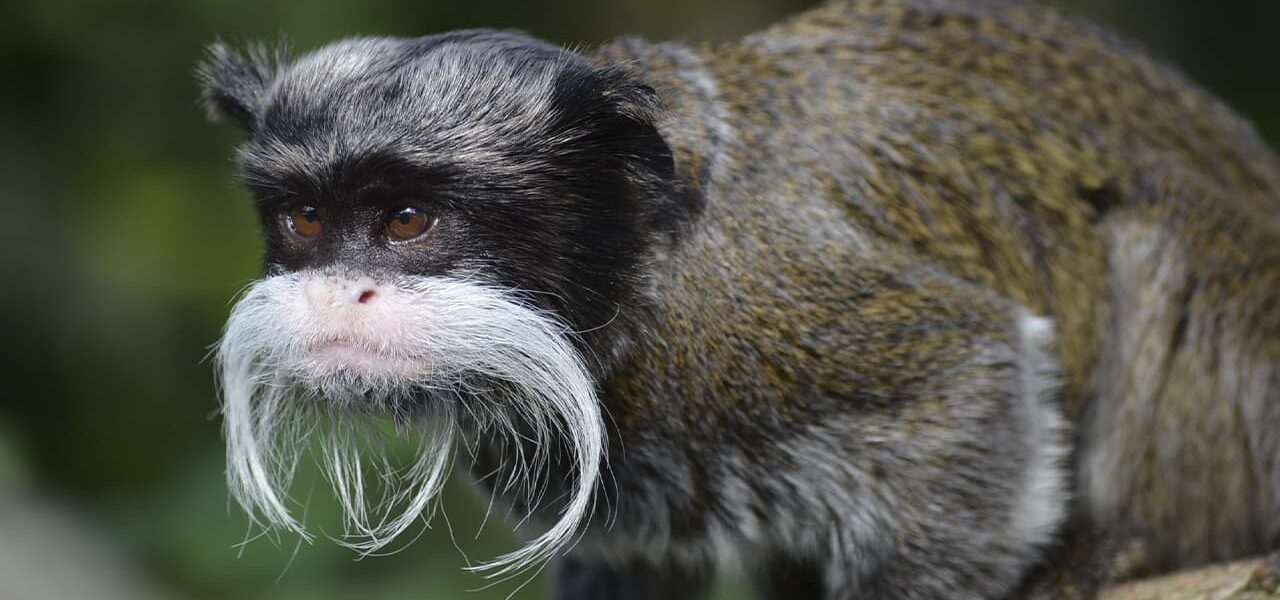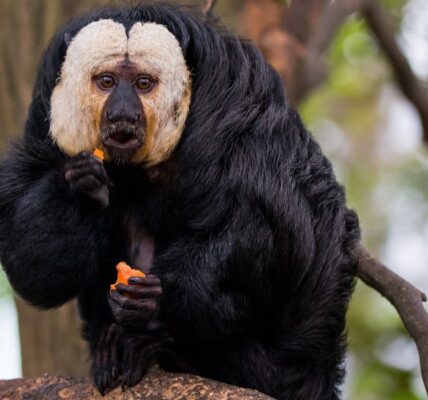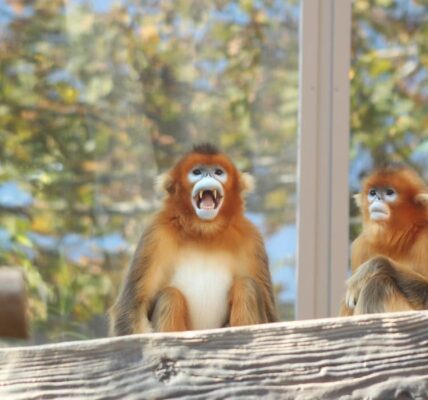Appearance of the emperor tamarin
The emperor tamarin is a dwarf primate species, with a body length of only 25 centimeters. The weight of an adult tamarin is about 300 grams. A tamarin has a very agile and tenacious tail, often it is the same size as the body, but it can be longer. The tail helps the animal to balance when traveling through the branches of trees, when it tries to get to the next delicious and ripe fruit.
The animal’s fur is usually dark in color. The only exceptions are the whiskers and beard: the beard is white, as if gray. The whiskers are what gave the tamarin its name, the emperor tamarin. The fact is that when scientists discovered this species of primate, they immediately remembered the mustache of German Kaiser Wilhelm II. That is how the toy monkey became known as the imperial tamarin.
The habitat of the imperial tamarin
Imperial tamarins inhabit the rain forests of the Amazon and are found in northwestern Brazil, eastern Peru, and northern Bolivia. Its range is limited to the Gurupi River in the east and the Putumayo River in the north and Madeira River in the south in the upper Amazon.
Lifestyle and diet of the imperial tamarin
Imperial tamarins live in trees. They try to avoid open spaces. These primates live in small groups of 8-15 individuals of different sexes.
Emperor tamarins lead a diurnal lifestyle and often move through the tree canopy. The flock carefully guards its territory. If suddenly other tamarins wander in, they are immediately expelled. The territory of each family is usually quite vast, up to 50 hectares of forest.
A peculiarity of the behavior of emperor tamarins is considered by scientists to be regular haircuts. Only the whiskers are trimmed. Tamarins do this “service” to each other, communicating with each other at the same time.
The tamarins have an unusual social hierarchy: the oldest female in the flock is in charge, not the male, as it is common in most animals. Males in the flock are busy getting food, and they also carry their cubs.
The diet of emperor tamarins consists mainly of plant foods. They eat all kinds of fruits of fruit and berry trees and bushes. They like to eat juicy young leaves and shoots, as well as flowers.
Sometimes their diet also includes animal foods, such as frogs and lizards, and they also eat bird eggs.
Reproduction of emperor tamarins
No stable pairs are formed within families. Imperial tamarins are polygamous animals. Females take turns to mate, according to their hierarchical position. Young individuals never mate before their older mates.
The average pregnancy of tamarins is 45 days. One or two babies are born; triplets very rarely occur. During the first days the cubs are completely helpless. Their weight does not exceed 35 grams, but they already have a mustache and a beard. The females feed the cubs every 2 hours, and in between, they ride on their fathers’ backs. At the same time, any cubs in the pack can count on the care and attention of any male. The cubs reach a certain independence at 3 months of age, and at one and a half years they enter puberty. At this point, the emperor tamarine has to make a choice – to stay in the parental family or to form its own family group.
Population status and conservation of emperor tamarins
The exotic appearance of these primates attracts the attention of poachers. They capture tamarins for private collections and sale to zoos and nurseries.
However, the most dangerous thing for the little monkeys can be considered not the interest in keeping them at home, but the mass deforestation of tropical forests.
Currently, these monkeys are designated a “vulnerable species” status. The life expectancy of the animals varies from 10 to 15 years.




